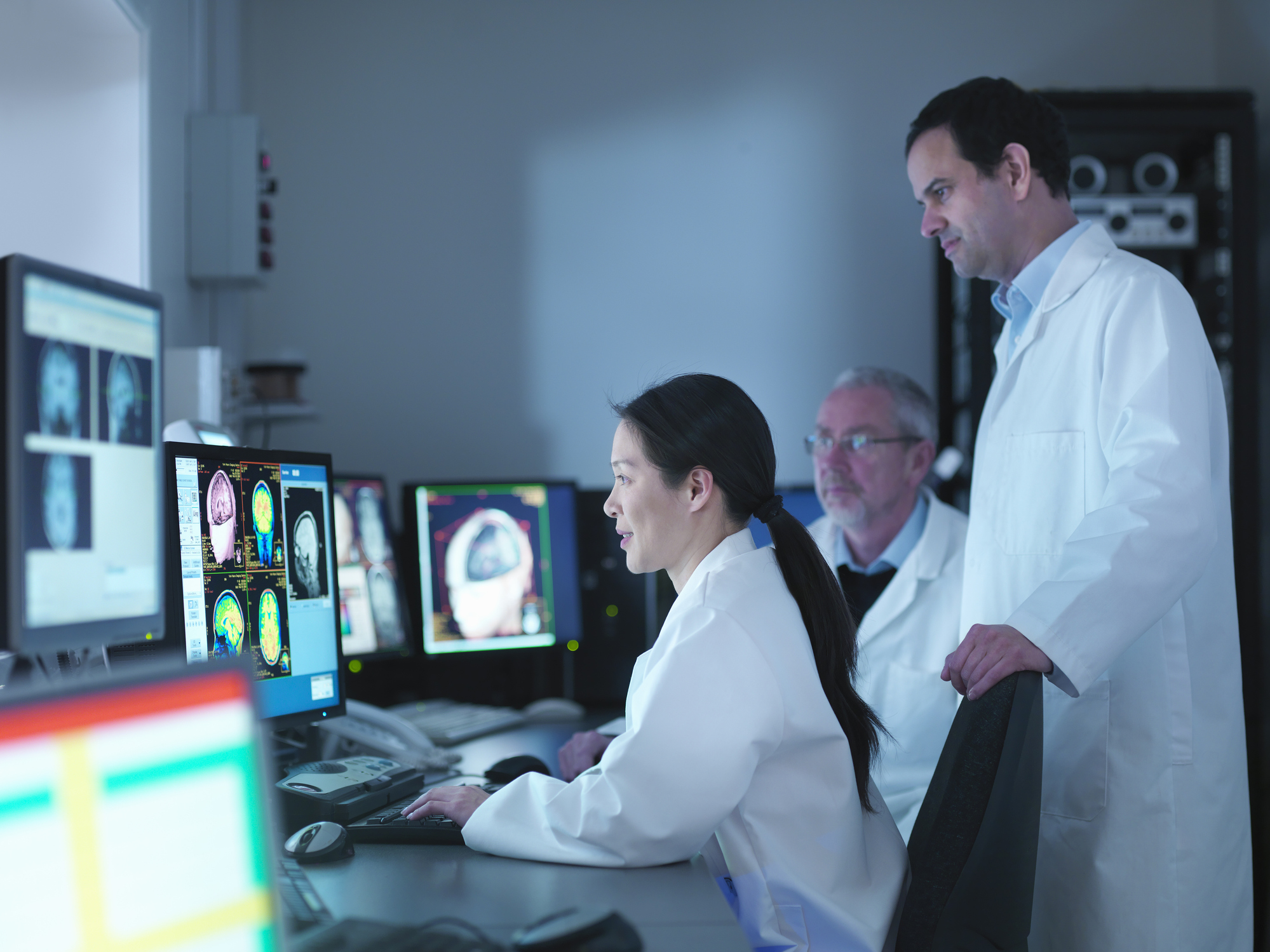In the final part of our series on the power of AI, we’ll explore radiology’s pivotal role in driving an enterprise AI strategy. We’ll look at how AI-powered solutions can help radiologists create more value for downstream care teams, patients, and other imaging stakeholders.
Last time, we examined how AI can serve as a reliable safety net—driving quality and follow-up care by helping to detect the things radiology can’t miss. As the industry continues to shift towards value-based care, radiologists have a golden opportunity to amplify their impact and demonstrate their value like never before. AI can help them seize this opportunity.
AI is about more than just driving efficiency and value for radiologists; its impact continues downstream by making report and imaging data more meaningful and easier to consume by referring physicians and care teams.
Adding value from point-of-read to point-of-care
To enable better-informed clinical decision-making and closer collaboration between imaging stakeholders, organizations need a streamlined approach to integrating and delivering AI-generated insights across the enterprise.
One way to achieve this is with a unified platform and infrastructure that intelligently manage the flow of information—from triage to follow-up—so that care teams have the timely clinical insights they need, when they need them.
At this critical juncture of healthcare’s evolving digital transformation, radiology can’t miss out on this opportunity to harness AI. And if radiology doesn’t embrace it, specialty service lines will and already are. Many AI services are targeting their marketing efforts directly at non-radiology specialties, furthering a siloed approach to health information management.
Beyond AI’s ability to help automate what radiologists can’t stand, surface what they can’t see, and catch what they can’t miss, AI has the potential to foster more cohesive care collaboration. Radiology has a right and a responsibility to be at the table when health systems are architecting an enterprise AI strategy.
We’ve been exploring ways radiology can amplify its impact with AI. But the question for most imaging teams is, “How can we get started?”
An AI-powered diagnostic imaging network
To help answer that question, Nuance created the Precision Imaging Network (PIN) to unlock the full potential of imaging AI from point-of-read to point-of-care.
PIN connects more than 14,000 healthcare facilities across the US and uses workflow-integrated AI to deliver real-time clinical intelligence to radiologists, referring physicians, care teams, and other imaging stakeholders. It integrates with existing IT systems, including PACS, viewers, and EHRs—all through a single, secure integration point. PIN combines the proven, trusted capabilities of PowerScribe radiology reporting, the established infrastructure of PowerShare image sharing, and the scale, security, and strength of Microsoft Azure. It also harnesses common data elements (CDEs) to create a common ontological framework, enabling stakeholders to seamlessly share meaningful insights that drive action across the imaging ecosystem.
Adding value with intelligent collaboration
Beyond radiologists and care teams, PIN also facilitates better collaboration between providers and payers to improve quality, care coordination, and utilization management. It can assist pharma and medical device companies qualify patients sooner and more accurately, helping them enhance and save more lives. And PIN also serves as a platform to accelerate the deployment and adoption of AI for imaging AI developers.
But the ultimate benefit of PIN is the value it creates for patients by enabling earlier detection and faster, more precise treatment options.
Get started with imaging AI
So, thinking back to our question about how to get started on your AI journey, the answer is: start small and grow. That’s the value of a data-driven platform supported by a flexible, consultative partner—you can tackle short-term challenges head-on while developing a long-term AI strategy. In truth, there are multiple ways to get started with imaging AI depending on your organization’s needs. So why not lean on Nuance’s experience, expertise, and our proven technology? Get in touch with a specialist today.







